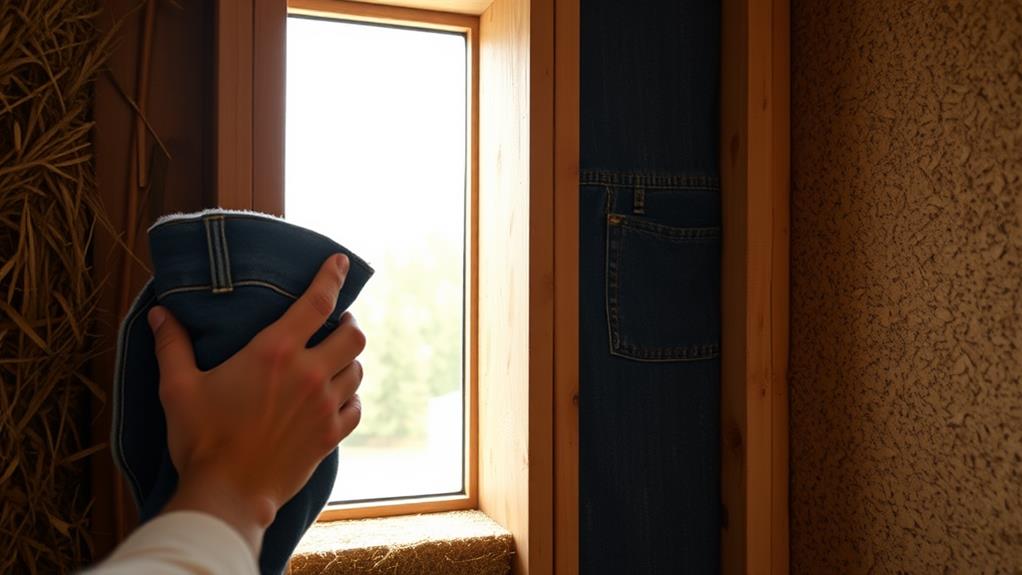When exploring eco-friendly insulation materials, you'll find a variety of sustainable options. Recycled denim repurposes textile waste, while sheep's wool naturally regulates humidity. Cork offers impressive fire resistance, and cellulose utilizes recycled paper products. Hemp insulation provides long-lasting performance without harmful chemicals. Cutting-edge aerogel delivers exceptional thermal properties in thin layers. Mycelium, made from fungi roots, shows promise for large-scale production. Straw bale insulation, crafted from agricultural waste, offers excellent thermal and acoustic benefits. These alternatives not only protect your home but also reduce environmental impact. Dive deeper to discover how these materials can transform your living space.
Recycled Denim Insulation
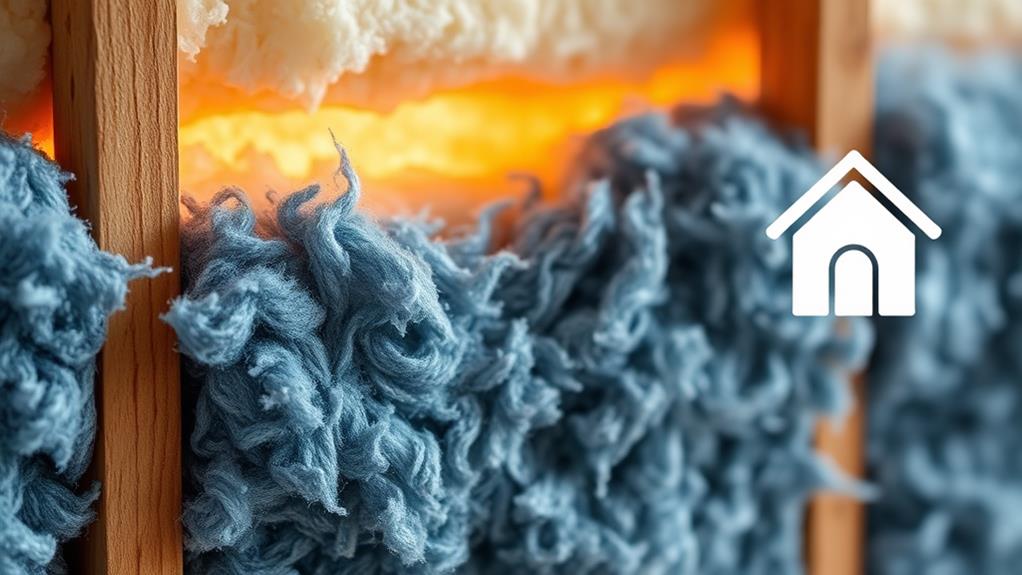
From old jeans to energy-saving walls, recycled denim insulation offers an innovative solution for eco-conscious homeowners. This sustainable material repurposes discarded denim and cotton fibers, diverting textile waste from landfills while providing excellent thermal and acoustic insulation properties.
You'll find that recycled denim insulation is treated with borate, making it fire-resistant and effective at deterring pests and mold growth. It's also free from harmful chemicals like formaldehyde, often found in traditional fiberglass insulation. Installation is straightforward and doesn't require protective gear, as the material isn't irritating to skin or airways.
When choosing recycled denim insulation, you're opting for a product with a significantly lower carbon footprint compared to conventional alternatives. It requires minimal energy to produce and can be recycled again at the end of its life cycle. While it may cost more upfront, you'll benefit from long-term energy savings and improved indoor air quality.
Consider recycled denim insulation for your next home project. It's an eco-friendly choice that doesn't compromise on performance, offering R-values comparable to fiberglass while contributing to a healthier, more sustainable living environment.
Sheep's Wool
Moving from repurposed textiles to natural fibers, sheep's wool stands out as another excellent eco-friendly insulation option. You'll find that this renewable resource offers numerous benefits for your home insulation needs.
Sheep's wool naturally regulates humidity, absorbing and releasing moisture without compromising its insulating properties. This feature helps maintain a comfortable indoor environment and prevents mold growth.
You'll appreciate that sheep's wool is naturally fire-resistant, thanks to its high nitrogen content. It doesn't melt or emit toxic fumes when exposed to fire, enhancing your home's safety. The material's structure also provides excellent sound insulation, reducing noise transmission between rooms or from outside.
Installation is straightforward, as sheep's wool comes in batts or rolls that you can easily fit between studs or joists. It's safe to handle without protective gear, unlike fiberglass insulation. You'll also benefit from its longevity, as sheep's wool can last for decades without losing its insulating properties. While it may cost more upfront than synthetic options, its durability and energy-saving potential make it a cost-effective choice in the long run.
Cork Insulation
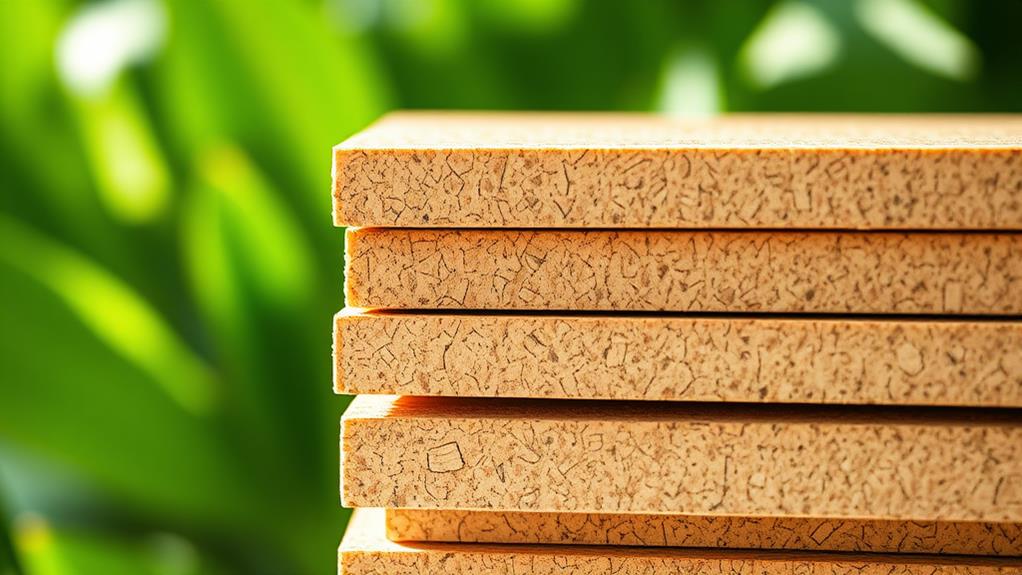
After exploring animal-based options, let's turn our attention to cork insulation, a plant-derived material that's gaining popularity in eco-conscious construction. Cork is harvested from the bark of cork oak trees, making it a renewable and sustainable resource. You'll find that cork insulation offers excellent thermal and acoustic properties, rivaling traditional synthetic materials.
One of cork's standout features is its natural resistance to mold, mildew, and pests. This means you won't need to treat it with harmful chemicals to maintain its effectiveness. Cork insulation also boasts impressive fire-resistant qualities, enhancing your home's safety.
When you're considering cork for your insulation needs, you'll appreciate its versatility. It comes in various forms, including boards, granules, and spray-on applications. This flexibility allows you to use cork in walls, floors, and roofs.
While cork insulation may have a higher upfront cost compared to some conventional options, you'll benefit from its longevity and energy-saving properties in the long run. By choosing cork, you're not only improving your home's efficiency but also supporting sustainable forestry practices and reducing your carbon footprint.
Cellulose Insulation
Eco-warriors seeking sustainable insulation solutions should consider cellulose. This eco-friendly material is made from recycled paper products, primarily newspapers, making it an excellent choice for environmentally conscious homeowners. You'll find that cellulose insulation is treated with non-toxic borate compounds, ensuring fire resistance and protection against pests and mold.
When you opt for cellulose insulation, you're choosing a material with a high R-value per inch, meaning it provides excellent thermal performance. It's also effective at reducing noise transmission, making your home more comfortable and quiet. You can apply cellulose insulation in two ways: loose-fill for attics and walls, or dense-packed for enclosed wall cavities.
One of the most significant advantages of cellulose insulation is its low embodied energy. It requires less energy to produce compared to many other insulation materials, further reducing your carbon footprint. Additionally, you'll appreciate that cellulose insulation can be installed without harmful chemicals or irritants, making it safer for installers and occupants alike. By choosing cellulose, you're not only improving your home's energy efficiency but also contributing to a more sustainable future.
Hemp Insulation
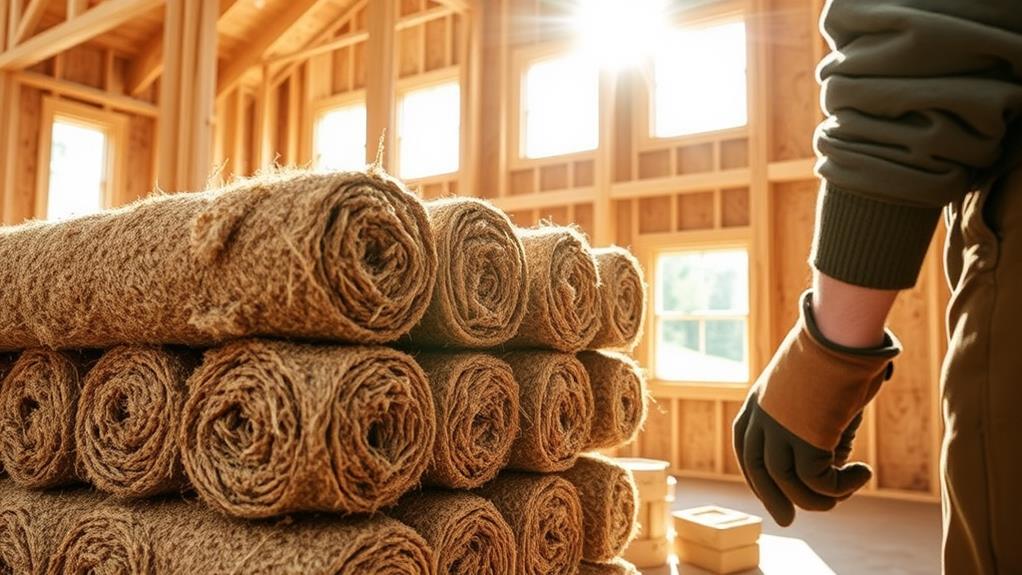
Enthusiasts of natural building materials are turning their attention to hemp insulation as a sustainable alternative. This eco-friendly option is made from the woody core of the hemp plant, which grows quickly and requires minimal pesticides. You'll find that hemp insulation offers excellent thermal and acoustic properties, rivaling traditional materials like fiberglass.
When you choose hemp insulation, you're opting for a product that's naturally resistant to mold, pests, and fire. It's also breathable, helping to regulate moisture levels in your home. You won't have to worry about harmful chemicals, as hemp insulation is free from formaldehyde and other toxic substances.
Installing hemp insulation is straightforward, and you can handle it without protective gear. It won't irritate your skin or respiratory system, making it safer for both installers and occupants. You'll appreciate its longevity too – hemp insulation maintains its shape and insulating properties for decades.
While it may cost more upfront than some conventional options, you'll benefit from long-term energy savings and a reduced carbon footprint. By choosing hemp insulation, you're supporting sustainable agriculture and contributing to a greener construction industry.
Aerogel
Scientists have developed aerogel, a revolutionary insulation material that's often called "frozen smoke" due to its ethereal appearance. This ultra-lightweight substance consists of 95-99% air, making it the world's lightest solid. You'll find that aerogel offers exceptional insulation properties, with thermal conductivity values as low as 0.004 W/mK.
When you're considering aerogel for insulation, you'll appreciate its remarkable performance in thin layers. It's up to four times more effective than traditional fiberglass insulation. You can use aerogel in various forms, including blankets, panels, and even as an additive to paint.
While aerogel excels in thermal insulation, it also provides excellent acoustic insulation and fire resistance. You'll find it particularly useful in applications where space is limited, such as in aerospace, automotive, and building retrofits.
However, you should be aware that aerogel production is currently energy-intensive and expensive. As technology advances, you can expect these costs to decrease, making aerogel more accessible for widespread use. Despite its current limitations, aerogel's potential as an eco-friendly insulation material is undeniable, offering a promising solution for future sustainable construction.
Mycelium Insulation
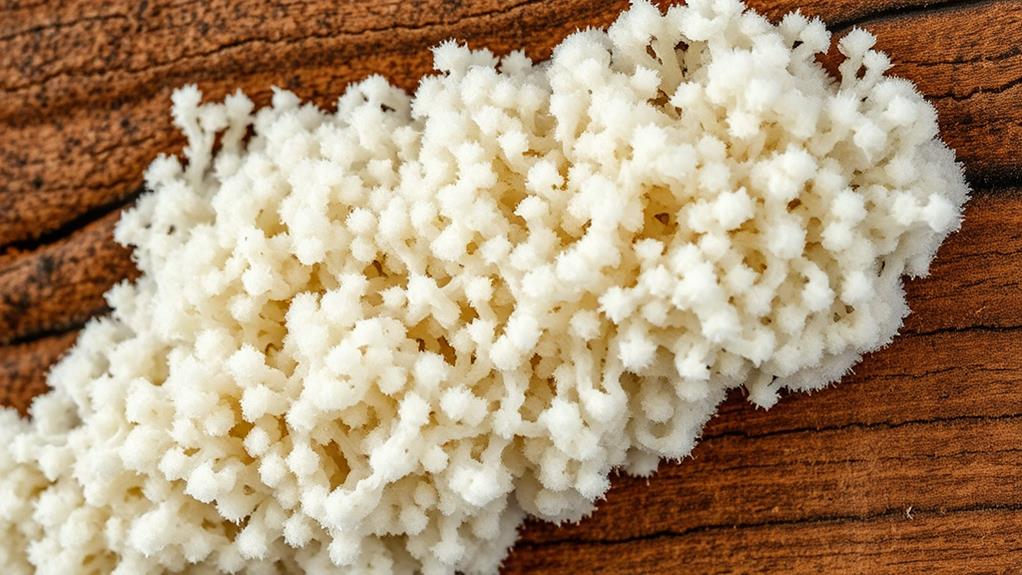
While aerogel represents cutting-edge synthetic insulation, nature offers its own innovative solution in the form of mycelium. You'll find that mycelium, the root structure of fungi, is gaining popularity as an eco-friendly insulation material. It's grown from agricultural waste products, making it a sustainable and renewable resource.
You can appreciate mycelium's impressive insulating properties, which rival traditional materials like fiberglass. It's naturally fire-resistant and doesn't release harmful toxins when burned. You'll also benefit from its sound-dampening qualities, making it an excellent choice for both thermal and acoustic insulation.
When you choose mycelium insulation, you're opting for a biodegradable material that won't contribute to landfill waste at the end of its life cycle. It's also mold-resistant and helps regulate humidity, creating a healthier indoor environment. You'll find that mycelium insulation is relatively lightweight, making installation easier and reducing structural load.
While it's still a developing technology, you can expect to see more mycelium-based insulation products hitting the market as demand for sustainable building materials grows. It's an exciting option that combines nature's ingenuity with modern eco-conscious construction practices.
Straw Bale Insulation
Turning to a time-tested natural insulator, straw bale insulation offers an eco-friendly alternative to conventional materials. You'll find that straw bales are made from agricultural waste, typically wheat, rice, or oat stalks. This renewable resource provides excellent thermal insulation properties, with R-values ranging from R-30 to R-50, depending on the bale's thickness and density.
When you're considering straw bale insulation, you'll appreciate its numerous benefits. It's non-toxic, fire-resistant when properly plastered, and resistant to pests when correctly installed. You'll also notice improved indoor air quality and sound insulation. Straw bales can be used in both new construction and retrofitting existing buildings.
However, you should be aware of potential challenges. Proper moisture management is crucial to prevent mold growth. You'll need to ensure the bales are kept dry during construction and protected from water infiltration. Additionally, you may face building code restrictions in some areas. Despite these considerations, straw bale insulation remains an attractive option for those seeking sustainable, high-performance insulation. It's a versatile material that can help you reduce your carbon footprint while creating a comfortable, energy-efficient living space.
Conclusion
You've embarked on a green journey through the world of eco-friendly insulation. From recycled jeans to fungal networks, these options are like a warm hug for your home and the planet. As you weigh your choices, remember that sustainability isn't just a trend—it's the foundation of our future. So, wrap your house in earth-loving materials and let your conscience rest easy. You're not just insulating; you're innovating for a greener tomorrow.
